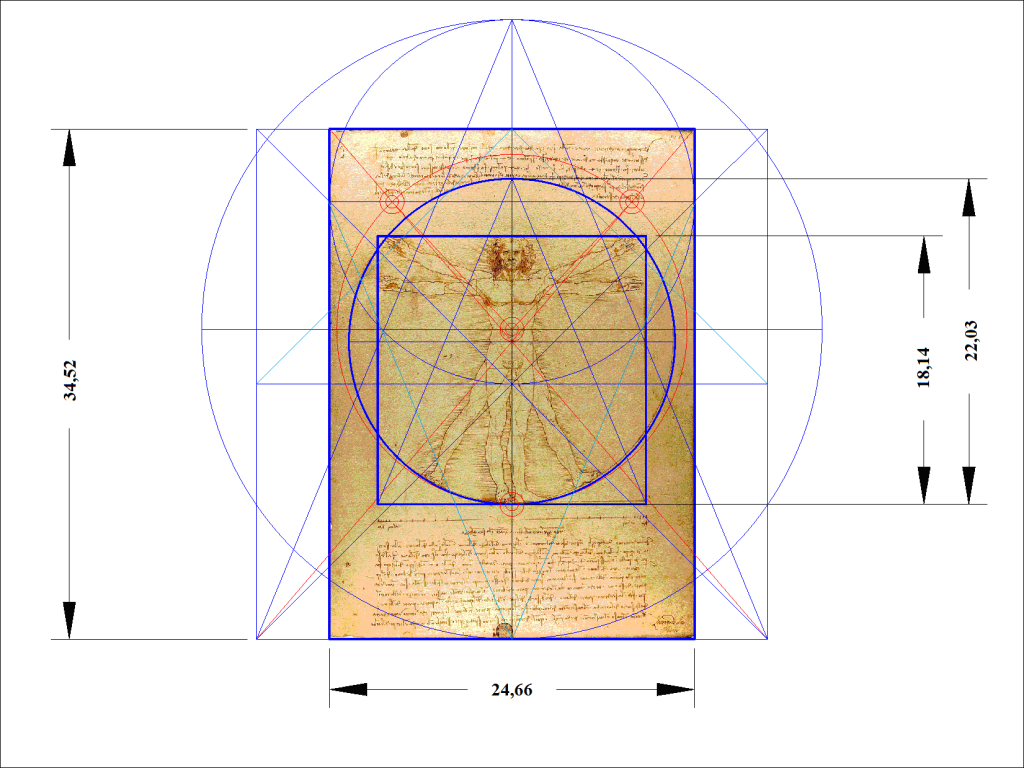The important relationship of mathematics to art cannot be understated when discussing Leonardo’s later work, and in numerous documents, letters and notes, the relevance of this is well documented. At times, he seems obsessed with these issues: while working on Mona Lisa for example, Leonardo is reported by Fra’ da Novellara to be concentrating intensely on geometry.
“Non mi legga chi non e matematico.”
“Let no one read me who is not a mathematician.”
Leonardo da Vinci
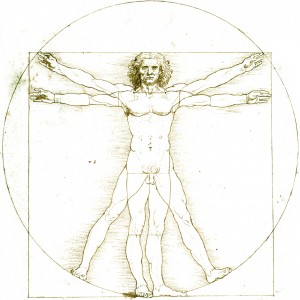
Certainly the instruction of Luca Pacioli in Milan was revealing to Leonardo, and this was manifested particularly in the ‘Last Supper’. There exists in mathematics a unique number, 0.618, which is the only one when divided into unity (1.0) yields its own reciprocal – 1.618. It is referred to as the ‘Golden Section’: also known as the ‘Golden Rule’, ‘Golden Cut’, ‘Golden Number’, ’Golden Proportion’, ‘Golden Ratio’. The formula was first recorded by Euclid, c. 300 B.C. In the fifth attribute of God, functional comparison, Pacioli sets the ‘Divine Proportion’ in relation to the Platonic quintessence.
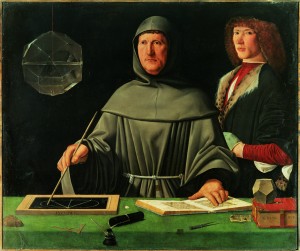
‘Portrait of Fra’ Luca Bartolomeo de Pacioli’, by Jacopo de Barbari, c.1495 (attribution unconfirmed). Table is filled with geometrical tools: slate, chalk, compass, a dodecahedron model. A rhombicuboctahedron half-filed with water is suspended from the ceiling. Pacioli is demonstrating a theorem by Euclid.
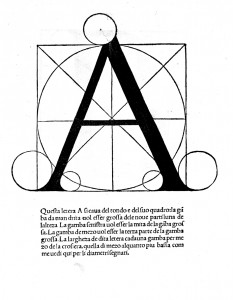
The letter ‘A’, illustration and design, for the De Divina Proportione by Luca Pacioli.
“As God confers being to the celestial virtue, called by the other name ‘fifth essence’, and through that one to the other four simple bodies, that is, to the four earthly elements … and so through these to every other thing in nature. Thus this our proportion is the formal being of (according to Timaeus) heaven, attributing to it the figure of the solid called Dodecahedron, otherwise known as the solid of twelve pentagons.” Luca Pacioli, De Divina Proportione
Why is this important? To Leonardo, and other Renaissance masters, the ‘Golden Ratio’ became a critical instrument in the matter of accurate proportionality. Fra’ Luca expounds the theory in 1498, while teaching in Milan, and later, in 1509, he and Leonardo collaborate to publish De Divina Proportione, in which is seen one of the most famous drawings associated with Leonardo: ‘Proportion Man’, also known as ‘Vitruvian Man’, which has become one of the world’s most iconic images. In the meantime, when the French finally re-occupy Milan in 1500, they take from Leonardo’s circle the Ferrarese architect, Giacomo Andrea, who had interpreted and translated some of Vitruvius’ work for Leonardo, and subsequently have him publicly beheaded and quartered on May 12, silencing a vital voice of science and independent thought. The message is not lost on Leonardo, who loses little time in diverting his loyalties to the French. At the same time, one can sense Leonardo disguising his own new-found knowledge in painting techniques that manifest themselves in his later works.
When Fra’ Pietro da Novellara and others write to Isabella d’Este in the early years of the 16th Century, there is significant reference that Leonardo has no patience to paint because of his constant studies of geometry. When Leonardo returned to Florence in 1500 he did so in the company of his mathematics tutor, Fra’ Luca Pacioli, and from an educational point of view this relationship cannot be underestimated. While Leonardo himself writes in general terms of the importance of mathematics, it is unlikely that this refers to the disciplines of algebra, trigonometry and calculus, common in today’s classrooms. Rather it is geometry that interests him most and that is most relevant to his art. Leonardo sees in geometry the precision through which he can construct unique compositions in perfect harmony within its setting. The two versions of Mona Lisa are suffused with mathematical similarities as well as the divine proportion.
Just after the publication of De Divina Proportione, Raphael painted his massive and extraordinary fresco, ‘The School of Athens’, in the Vatican. This incorporates many of the mathematical theories of Luca and Leonardo; in addition, most of the historically famous characters from ancient Greece are represented. It is also an homage to the master. Raphael himself is Apelles, the great painter; Bramante, the architect of St. Peter’s Basilica, is Euclid; and perfectly centered in the work is Plato, as represented by Leonardo.
Kenneth Clark writes: “If man was the measure of all things, physically perfect man was surely the measure of all beauty, and his proportion must in some way be reducible to mathematical terms and correspond to those abstract perfections, the square, the circle, and the golden section.” Clark goes on to remind us that “This union of art and mathematics is far from our own way of thinking, but it was fundamental to the Renaissance. It was the basis of perspective,” i.e. “scientific representation of receding figures in space …”
Leonardo never tired of the intense relationship between art and visual mathematics. His fascination with the sense of infinity, as depicted in his knot designs, was perhaps also an unwitting precursor to theories of Fractal Geometry and their relationship, in turn, to nature. Though these mathematical theories have been refined only as recently as the 1980s, Leonardo was working on their practical application 500 years earlier.
A beautiful example is the intricate and subtle pattern on Mona Lisa’s blouse. The design may initially appear innocuous, but the brain that conceived it, and the genius that created it was dedicated to the belief that a deep understanding of mathematics was fundamental to the creation of great art. One of the things that makes the ‘Earlier Mona Lisa’ such an extraordinary work, is that not only does it display a full range of knowledge of geometry often used by Leonardo, but that these innovative elements can be seen throughout the painting.
THE ‘GOLDEN RATIO’ IN THE ARTS
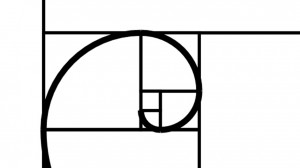
True Golden Spiral: the length of the side of a larger square to the next smaller square is in the ‘Golden Ratio’.
Many books claim that if a rectangle is drawn around the face of the Louvre ‘Mona Lisa’, the ratio of the height to width of that rectangle is equal to the ‘Golden Ratio’. No documentation exists to indicate that Leonardo consciously used the ‘Golden Ratio’ in the composition of the Louvre ‘Mona Lisa’, nor to where precisely the rectangle should be drawn. Nevertheless, one has to acknowledge the fact that Leonardo was a close personal friend of Luca Pacioli, who published a three-volume treatise on the ‘Golden Ratio’ in 1509 entitled De Divina Proportione (On Divine Proportion). Leonardo’s illustrations of polyhedra for that publication, and his views that some bodily proportions exhibit the ‘Golden Ratio’ have led some scholars to speculate that he incorporated the ‘Golden Ratio’ in (some of) his paintings.
Much has been written by scholars about the opinion that Leonardo built his portraits on the basis of a triangular construction, therefore implying that this idea was Leonardo’s innovation; something that made his work unique. Realistically, the human body posing for a portrait would naturally take a triangular shape. In addition, the number of degrees in the critical angle of any triangle might also be arbitrary. There is no hard and fast rule.
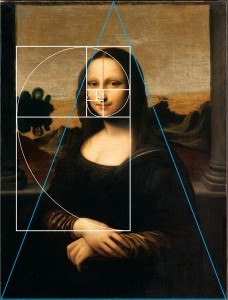
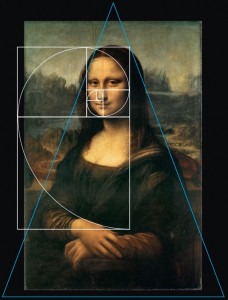
In the case of the ‘Earlier Mona Lisa’, the legs of the (blue) triangle are shown correctly placed in the lower corners, and the peak bisects the width of the painting at the top. Now, that ‘Golden Ratio’ diagram is applied. It nestles against the edge of the left column, and, coming across the top of her head, exactly meets the leg of the triangle. At the same time, the spiral beautifully frames her face, with the rounded side on the right, and the vertical side on the left. Also, the spiral winds from the tip of her nose, grazing the bottom of her chin, and all the way around to her right arm, from elbow to thumb.
The same set of diagrams was applied to the Louvre ‘Mona Lisa’. In theory, if Leonardo painted or designed both pictures, then the application of diagrams should work equally well on both. As is known, the wood panel of the Louvre ‘Mona Lisa’ is somewhat smaller than the canvas of the earlier painting, and, to complicate matters, the figure of the Louvre ‘Mona Lisa’ is slightly larger than that in the ‘Earlier Mona Lisa’. The theories of both the triangular construction, as well as the ‘Golden Ratio’ as depicted in the diagram, work equally well.
However, because of the size of this picture, some of the diagram’s edges and starting points are outside the plane of the panel. This is not a problem. In scaling drawings, not all equations have to be on the same page. Often, vanishing points and horizon lines are unseen on a painting by the viewer; but that does not mean that they are not there. The construction of the work has to fall within the limitations imposed by the size and shape of the support. At first it may look restrictive; but a qualified draughtsman will be able to apply the critical information, more or less as it is shown here.
The vertical red dotted line is an arbitrary addition. In the case of both portraits it extends the vertical line that starts at the lower point of the chin, and perfectly bisects the face to the parting of the hairline.
The Geometry Of Beauty In The Paintings By Leonardo da Vinci
by Alfonso Rubino
Works of Leonardo are interconnected through an invisible geometric-harmonious fabric. The discovery was made by studying the drawing, the ‘Vitruvian Man‘. Leonardo gives primary importance to the external dimensions of the paintings inviting us to consider not only the content but also the support of his works. By support I mean the external dimensions of the work. In the case of the Vitruvian Man, the sheet was, according to my hypothesis, originally 34.52 cm high and 24.66 cm wide.
Art historians, following the tradition of Vitruvius, define the possible presence of a geometric fabric on the basis of a Work of Art: an iconogram.
In Leonardo’s work, inconograms are connected to each other both typologically and dimensionally. The geo-seed that produces them is the geometric model found in the Vitruvian man.
It is the harmonious universal code which is based on Archimedes’ quadrature of 22/7.
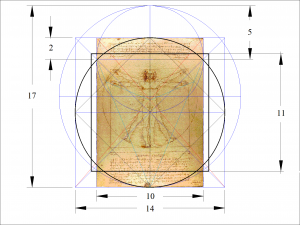
Vitruvian Man
The harmonic code of the Vitruvian Man is also, undoubtedly, found in His other important works:
‘The Annunciation‘, the ‘Virgin of the Rocks‘ in the Louvre, the ‘Baptism of Christ‘ and the ‘Last Supper‘.
And in Leonardo’s work, one can reconstruct a sequence of iconograms depending on the level of complexity.
- The Annunciation – Level 1
- Baptism of Christ – Level 2
- Virgin of the Rocks, Louvre – Level 3
- Vitruvian sheet – Level 1
- Vitruvian Man – Level 3
- Earlier Mona Lisa- Level 2
- Louvre Mona Lisa – Level 3b
The analysis of Verrocchio’s ‘Baptism of Christ‘ (painted with the help of Leonardo) allows to understand that the code was transmitted to Leonardo by His Masters. He was not the only artist to use it at that time. For example, the code can be found the ‘Spring‘ by Botticelli.
In this document you will find the geometric sequence between the ‘Vitruvian Man‘, the Louvre and the earlier Mona Lisas. He is the logical and deductive order.
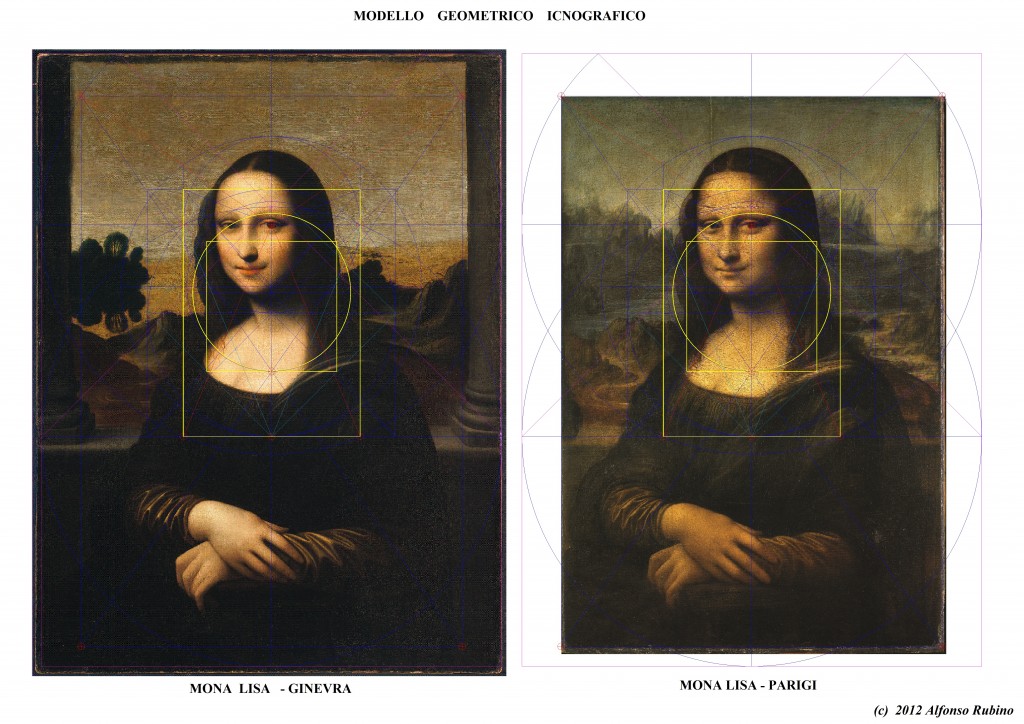
The Geometric-harmonic fabric suggests that the author of the ‘Earlier Mona Lisa‘ is the same as the author of the Louvre Version. Given the geometric data presented, it would seem impossible that the earlier version could have been executed by any artist other than Leonardo.
In the link below, you will find a comparative table with the various iconographic models of Leonardo
http://alfonsorubino.altervista.org/
In the table below, you will find both the theoretical and effective dimensions of the Leonardo works. (The theoretical dimensions of the support of the ‘Vitruvian Man‘ are fixed before the fact).
|
Actual |
Theoretical |
||||
| Annunciation |
98 |
217 |
97,81 |
216,47 |
|
| Baptism of Christ |
151 |
177 |
152,04 |
177,37 |
|
| ‘Virgin of the Rocks‘ |
122 |
199 |
122,26 |
199,13 |
|
| Vitruvian man |
34,4 |
24,5 |
34,52 |
24,66 |
|
| Louvre Mona Lisa |
53 |
76,8 |
53,14 |
76,77 |
|
| Earlier Mona Lisa |
64 |
86 |
64,11 |
85,51 |
Through the link below, you will find a comparative table between the Louvre ‘Mona Lisa‘ and the ‘Earlier Mona Lisa‘
http://alfonsorubino.altervista.org/
Related bibliography by the author:
a- La Triplice Cinta –Roberto Mosca & Alfonso Rubino
La geometria della bellezza nelle opere dei maestri di ogni tempo-Terra Nuova Edizioni – Firenze
b- Il Segreto dell’Uomo Vitruviano di Leonardo –libro elettronico
Casa Editrice – Liberfaber – Principato di Monaco
http://www.liberfaber.com/
A slideshow of the essential elements is available here:
http://www.slideshare.net/alfonsorubino/dall-uomo-vitruviano-alle-donne-vitruviane-di-leonardo2
